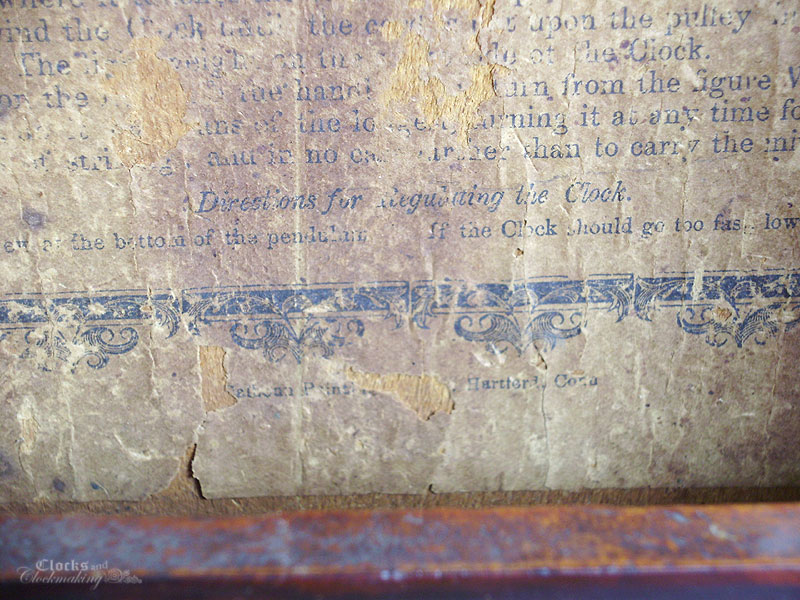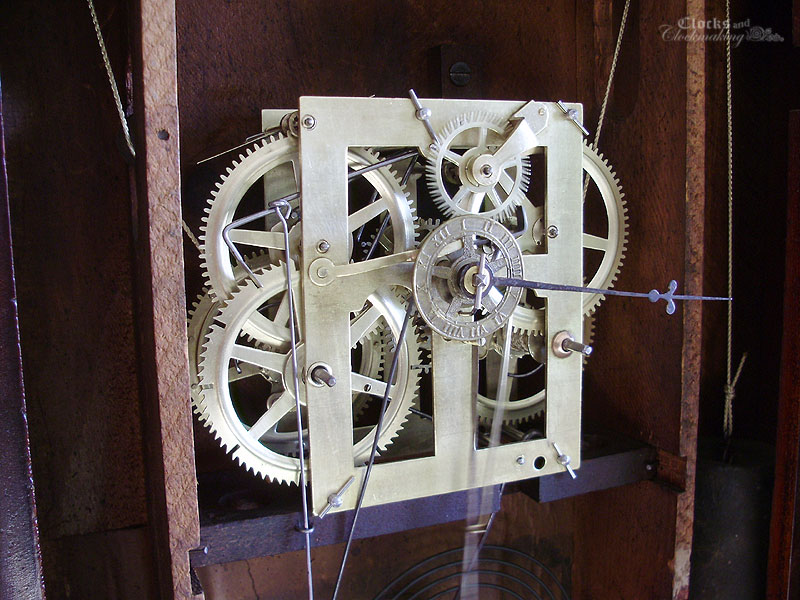
Here are a few details of the label while I was working on the clock case (gong base and alarm removed):

Note the dial mounting holes. These had been plugged with toothpicks and yellow glue, and the current dial setup used two screws at the bottom.


The printer's name is hard to make out. The place is Hartford Connecticut. First part looks like ?athoan Printing ???

The movement needed only cleaning, 2 bushings, and a re-repair to this lever:


Rather than a splice repair, and complete new lever was made.


Here is the repaired and running movement:



The case needed 2 small veneer repairs. The missing veneer areas had been stained to hide the light pine secondary wood, so the two areas were hard to see in the photos (very visible in person).

I made a very quick caul to clamp the curved veneer patch, and the veneer itself was whetted and taped around a circular form to dry, before cutting them to shape. They were glued with hide glue.


Sanding to level the patches.

After putty (for tiny gaps) and staining. The patches were coated with low gloss lacquer just to seal and protect them. If the finish had been more even and smooth, I'd have used shellac and blended-in the whole area.

The only other repair that I wanted to make to the case was to fix the way the dial was attached. The dial had 2 screws fixing the base, and bent L wires at the top corners. The dial was originally set crookedly as well, which showed against the centre door stile:
(Before)

The holes were plugged, puttied, and painted to camouflage the patches. The dial was then set up for mounting with bent L wires at the base. The two screw holes were so close to the edge of the dial that I was able to turn them into small notches for the pins. I find that this is the simplest and most correct arrangement for zinc dials. Especially on ogee clocks.

There was also a bit of lifting to the rear edge of the veneer on the right side, so that was also a very easy fix. Some hide glue on a palette knife, and a bit of painter's tape, and once the glue was dry, the veneer was solidly in place again.

And that was it. The clock came out wonderfully.


JC as always this is amazing to watch. I know if I find something at some time where I'm sending it.
ReplyDeleteThanks Jester. As far as restorations go, this one was pretty minimal. Just keep your eyes peeled for when I eventually post the extremely complicated restoration of the John Birge column clock (visible in the background). I've been working on that one on-and-off for over a year.
DeleteVery nice job. Do you know if it's possible to find reproduction labels for Welch clocks? I have one and its label is all but faded away. Thanks.
ReplyDelete